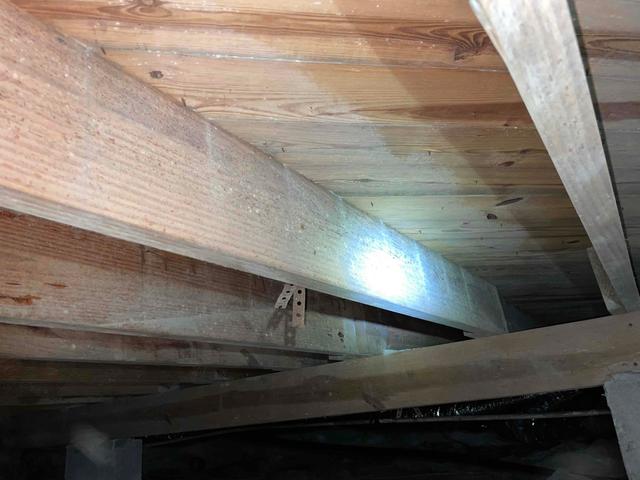
Mold and Mildew Growth
Mold and mildew have formed along the floor joists of this crawl space. This occurs on organic materials when the relative humidity reaches over 60% during warmer temperatures. Musty odors and mold spores can find their way up into the home and irritate those with allergies and asthma.
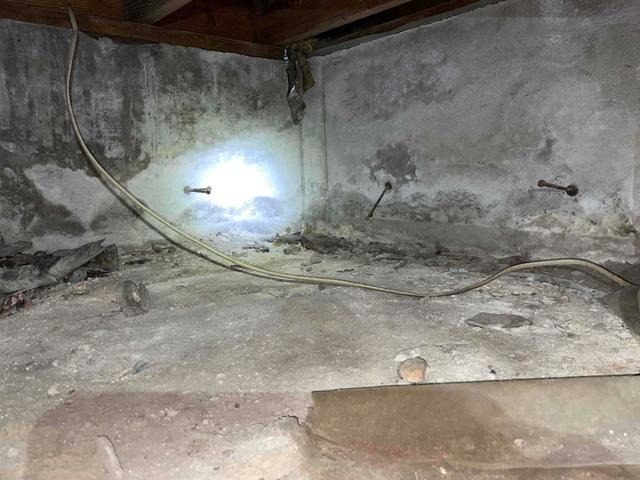
Exposed Crawl Space Flooring
There are many exposed areas of the crawl space where the earth's moisture can rise into the area and raise the relative humidity. This can lead to cold floors in the winter, high energy bills, and mold or mildew growth. The floors were also littered with debris and old material, making it difficult for service persons to maneuver around the crawl space.
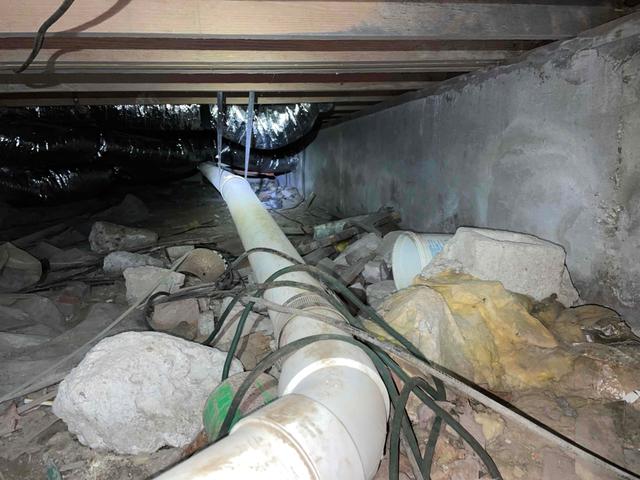
Efflorescence on Foundation Walls
The walls of this crawl space were created using poured concrete. These walls are less porous than the typical cinderblock walls, but moisture can still seep through over time. When water forces its way through the walls, it brings along with it the inner salts and sediments to the surface. The discoloring and chalk-like substance on the walls is proof of this. It is also possible that the moisture has leaked in through the rim and band.

Mold Remediation
An antimicrobial, called Shockwave, was applied to the affected floor joists to help eliminate mold growth. Shockwave is an antimicrobial designed to destroy mold and mildew on organic materials, however, it does not remove the staining left behind by the growth. It is also important to note that mold can grow back if the environment of the crawl space is not controlled.
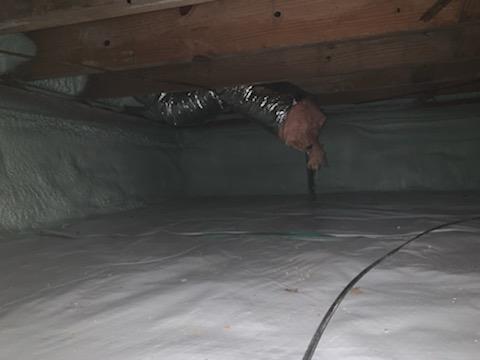
CleanSpace Light
A 10-mil CleanSpace vapor barrier was installed over the dirt flooring of the crawl space. This 5-layer polyethylene liner is wrapped around all piers, sealed with vinyl tape, and mechanically fastened to the foundation walls six to eight inches above outside grade. CleanSpace will help to prevent the earth's moisture from rising into the crawl space and affecting the relative humidity and environment.
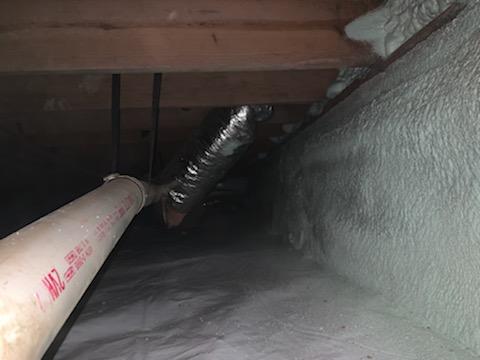
Closed-Cell Spray Foam
An inch and a half thick application of closed-cell spray foam was used to cover the foundation walls. This will not only insulate the crawl space but also act as an air barrier and vapor retarder, giving protection to the crawl space from outside influence. A two-inch viewing strip is left for termite inspectors.


